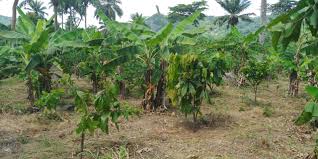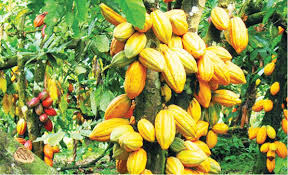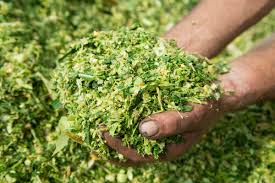This article will give you the general overview of what is meant by tree crops. The article will lead into the definition of Tree crops and production areas in the country will be covered.
General methods of propagation both the sexual and vegetative will be described. By the end of this article you will be able to collect and prepare propagation materials.
It will take you to preparation and management of nursery beds. You should be able to know the difference between budding and grafting.
Definition of Tree Crops
You may wish to differentiate between Forest Trees and Tree Crops. Trees generally refer to woody plants. They could be Tropical Trees or Temperate plants. Tree crops in our context refer to trees cultivated for their food, cultural or economic values.
These include oil palm, Rubber, Cocoa, Cashew, Mango, Oranges (Citrus), Plantain, Banana, Coconut, Guava, Pawpaw, Kolanut, Coffee and Parkia. These are other less prominent local fruit trees which are traditionally cultivated Examples of such are Irvingia (Bush mango), Bread fruit and Pea trees, etc.
Types of Tree Crops

Broadly speaking, there are two types of Tree crops in Nigeria for the purpose of this article. Crops that are mainly cultivated for food and those that are produced for economic reasons.
Tree crops in the former include plantains, bananas, pineapples, pawpaws, parkia, guavas and the likes. Crops such as oil palm, rubber, cocoa cashew, mangoes, citrus, kola, coffee are cultivated for their economic value as cash crops both for internal markets and export.
Read Also: Introduction to Fish Nutrition
Importance of Tree Crops in Nigeria

Tree crops and their fruits are important in Nigeria for their nutritional, medicinal cultural or economic values to the nation.
Fruit trees production is very important as they have the potentials for a large share contribution to national economic growth through the facilitation of better balanced nutrition for Nigerians, provision of raw materials for agro-based industries, creation of new employment opportunity as product market increases.
Exportation of tree crops produce contributes to generation of foreign exchange. the crops also play a major role in the cycling of plant nutrients, soil and water conservation and the maintenance of favourable macro- and micro-climatic conditions and the creation of shelter belts and wind breaks for desertification control efforts of the federal government of Nigeria.
In recent times attention has been drawn to the medicinal potency of many of our fruits in Nigeria such as pawpaw, citrus, plantain, banana and pineapple.
Read Also: Factors to Consider when Selecting your Fish Farming Site
Origin and Areas of Production

Most of the Fruit tree crops cultivated in Nigeria had their origin from the Tropical Africa, South America, Asia and Sub tropical regions of the world. Nigeria is one of the distribution centres for some of the crops, e.g oil palm.
Naturally, most of the fruit tree crops in Nigeria are grown in the southern parts of Nigeria, but some are adapted to the northern areas through improved cultural and agronomic practices and availability of modern irrigation systems.
Vegetative Propagation
Tree crops are generally propagated by two main methods:-
When seedlings are produced through seeds it is known and called sexual propagation ie seedling production through seeds.
However, in some instances (e.g) bananas) seeds are not normally produced by the plant and vegetative propagation is the only practical means of establishing seedlings for the orchard.
Vegetative propagation is used, for instance in mango, rubber and citrus as a means of securing high-yielding, genetically uniform field plantings.
You will realize later that high yielding plants which are used to produce planting material are often far from being homozygous (uniforms) so that considerable segregation occurs in seed material (e.g. oil-palm).
This is why you find that many planters prefer to use vegetative materials for planting even though its production may be tedious. The two main methods of vegetative propagation as you will discover in
Sexual Propagation
In some crops where there is considerable uniformity, propagation is usually by sexual method (i.e seedlings are produced by direct seeding).
These crops include guava, pawpaw, cocoa, kolanut and cashew to mention but a few. You will sow the seed in the Nursery directly and later transplant to the field at appropriate time depending on the crop and variety.
Collection of Propagation Materials
For sexual propagation, you will need to collect your seed material from authentic sources. You must sow certified breeder’s seeds so that you may obtain true to type fruit in future. Clean and health seed must be used.
You should first survey round to identify trees that have history of true to type fruits, high yielding and freedom from diseases and pests. Such trees would be marked before deciding on buds from which the scions would be taken.
Scions are the materials taken from describe buds which would be used on the seedlings in the Nursery called “stocks”. You will remove all the leaves on the chose branches and leave them on the trees for about five days after which the branches would be cut and taken to the Nursery immediately for use.
You will select scions to be used, carefully removing them devoid of wood with sharp and clean budding knife. You are now ready for budding or grafting proper.
Do you have any questions, suggestions, or contributions? If so, please feel free to use the comment box below to share your thoughts. We also encourage you to kindly share this information with others who might benefit from it. Since we can’t reach everyone at once, we truly appreciate your help in spreading the word. Thank you so much for your support and for sharing!
Read Also: FaceBook Ad Types and How to Benefit your Business using them

